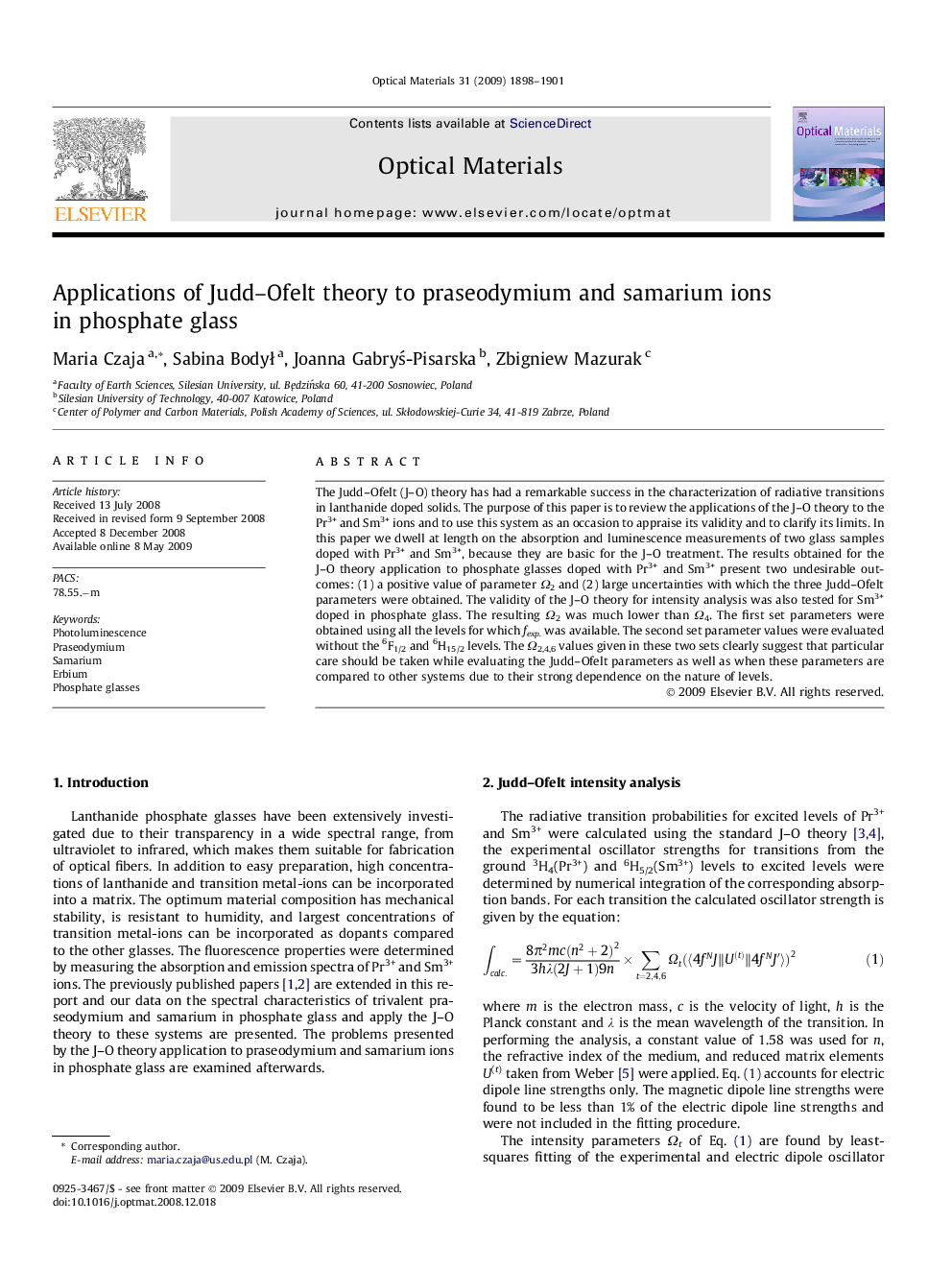| Article ID | Journal | Published Year | Pages | File Type |
|---|---|---|---|---|
| 1496317 | Optical Materials | 2009 | 4 Pages |
The Judd–Ofelt (J–O) theory has had a remarkable success in the characterization of radiative transitions in lanthanide doped solids. The purpose of this paper is to review the applications of the J–O theory to the Pr3+ and Sm3+ ions and to use this system as an occasion to appraise its validity and to clarify its limits. In this paper we dwell at length on the absorption and luminescence measurements of two glass samples doped with Pr3+ and Sm3+, because they are basic for the J–O treatment. The results obtained for the J–O theory application to phosphate glasses doped with Pr3+ and Sm3+ present two undesirable outcomes: (1) a positive value of parameter Ω2 and (2) large uncertainties with which the three Judd–Ofelt parameters were obtained. The validity of the J–O theory for intensity analysis was also tested for Sm3+ doped in phosphate glass. The resulting Ω2 was much lower than Ω4. The first set parameters were obtained using all the levels for which fexp. was available. The second set parameter values were evaluated without the 6F1/2 and 6H15/2 levels. The Ω2,4,6 values given in these two sets clearly suggest that particular care should be taken while evaluating the Judd–Ofelt parameters as well as when these parameters are compared to other systems due to their strong dependence on the nature of levels.
